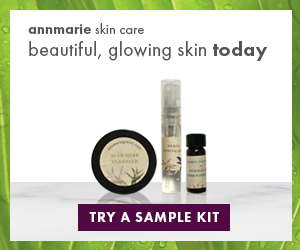The September issue of Consumers Reports- the same one that famously dissed the iPhone 4 for not being able to make decent phone calls- has a cover story entitled “The 12 Most Dangerous Supplements”.
It deserves a comment or two, first about Consumers Reports in general, second about the specifics of the article.
Consumers Reports is considered to be an “objective” (if extremely conservative) magazine, skewed to a much older demographic. No one I know who is expert in a particular field takes their recommendations in that same field seriously—for example, car aficionados scoff at their car ratings and stereo afficiandos find Consumer Reports recommendations for home stereo equipment laughable. When Consumers Reports talks about vitamins and nutrition I roll my eyes, but I’ll turn to them for info on things I know nothing about like buying a good washing machine.
The current cover on “dangerous” supplements may certainly sell magazines, and it even contains some reasonable (if woefully incomplete) information, but it also sends the message that supplements are dangerous, and the text of the article certainly supports Consumers Reports belief that supplements are pretty much a waste of time in any case. (You know the routine—“you can get everything you need from food, ho hum”, standard American Dietetic Association claptrap. But I digress.)
So I was surprised to find that there was nothing on their list of supplements to avoid that I really disagreed with. The tone and message of the overall article, however, is a different kettle of fish.
First the supplements themselves. The twelve supplements that Consumers Reports warns against are these:
- Aconite
- Bitter Orange (this is the ingredient a lot of manufacturers use instead of ephedra)
- Chaparral
- Colloidal Silver
- Coltsfoot
- Comfrey
- Country mallow
- Germanium
- Greater Celandine
- Kava
- Lobella
- Yohimbe
Now contrary to the impression left by the cover, there’s not a single vitamin or mineral in the bunch (unless you consider colloidal silver a mineral). And contrary to my own expectations, I can’t find anything on this list to disagree with (with the possible exception of yohimbe). Of course a master herbalist who really knows his or her stuff and is treating a specific patient with a specific herb on this list for a specific purpose is a different story, but by and large I think Consumers Reports got this right- these are all products you don’t need to be taking.
I was also pleasantly surprised by the accompanying list, “Eleven Supplements to Consider”, which I also found no fault with. Here they are:
- Calcium
- Cranberry
- Fish oil
- Glucosamine sulfate
- Lactase (an enzyme that helps dige t milk)
- Lactobacillus (probiotics)
- Psyillium (fiber)
- Pygeum
- SAMe
- St. John’s Wort
- Vitamin D
And I liked some of the accompanying advice, simple and uninspired though it might be, such as “Be skeptical about claims made for supplements in ads on TV”. Oh, really? Glad you thought of that!
The same issue of Consumers Reports also contains an article on Multivitamins (“most that we tested were fine”) which contains a bit more troubling information in the form of some not-so-subtle propaganda (as in “you can get all the nutrition you need from food”) .
For one thing CR emphasizes concerns that some of the vitamins tested contained either more of an ingredient than was listed on the label, or less of it. (This is usually much less of a “problem” than it might appear, though obviously sometimes it is.) And they highlighted one case where a guy got really sick from such a product (it contained two hundred times the amount of selenium on the label!) making it seem that the whole mislabeling issue is a much more common occurrence than it really is.
They also reiterate the tired old party line about not exceeding the “recommended daily value” for nutrients, although not a single nutritionist I know thinks most of those “recommended doses” are worth the government paper they’re printed on. (One exception- even the staid Consumer Reports now thinks the ridiculous recommendation of 400 IUs daily for vitamin D isn’t enough.)
It’s worth pointing out that the brands tested are all big-box store brands (Centrum, One-A-Day, Costco, Wal-Mart, Flintstones and the like).
One reason I continue to support the companies and formulations you find on my website- and why I encourage you to purchase “Doctor’s Brands” that are generally only available through websites like this or at the office of health professionals—is that these brands are almost never among those found to be wanting in tests like the ones done by Consumers Reports or even the very responsible Consumer Labs.
These “professional” brands (like Designs for Health, Crayhon Research, Vital Nutrients, Pure Encapsulations, and the consumer brand Barlean’s Organic Oils) are made by much smaller companies, with enormous quality control, in much smaller batches, with much more expensive ingredients (magnesium citrate or magnesium glycinate as opposed to magnesium oxide, just to mention one example), and contain doses of nutrients that are clinically meaningful.
I meet the owners and scientific advisors to these companies regularly at conventions and conferences, I talk with them, I hear their passion, I look at their assays (lab tets for impurities and heavy metals) and I can- and do– recommend them with confidence.
With all that said, it’s interesting that the number of deaths from “dangerous” vitamins per year is.. let’s see.. that would be zero. (I’m not counting cases like a toddler getting into a bottle of iron tablets and swallowing them all.)
The same statement can hardly be said of prescription drugs, even used “properly”. It can’t even be said of aspirin.
I’m waiting for Consumers Reports to put out an issue with the cover story, “The 12 Most Dangerous Prescription Drugs”.
It’ll be a long wait.
Don’t Forget: Only a few more weeks till the big event in Scottsdale Arizona!
Spend a day with me, Jonny Bowden, together with healer extraordinaire Glen Depke, Traditional Naturopath for the “Take Command of Your Weight” event.
To find out more about it, or to register now, click here
________________________________________________________________








Leave A Comment